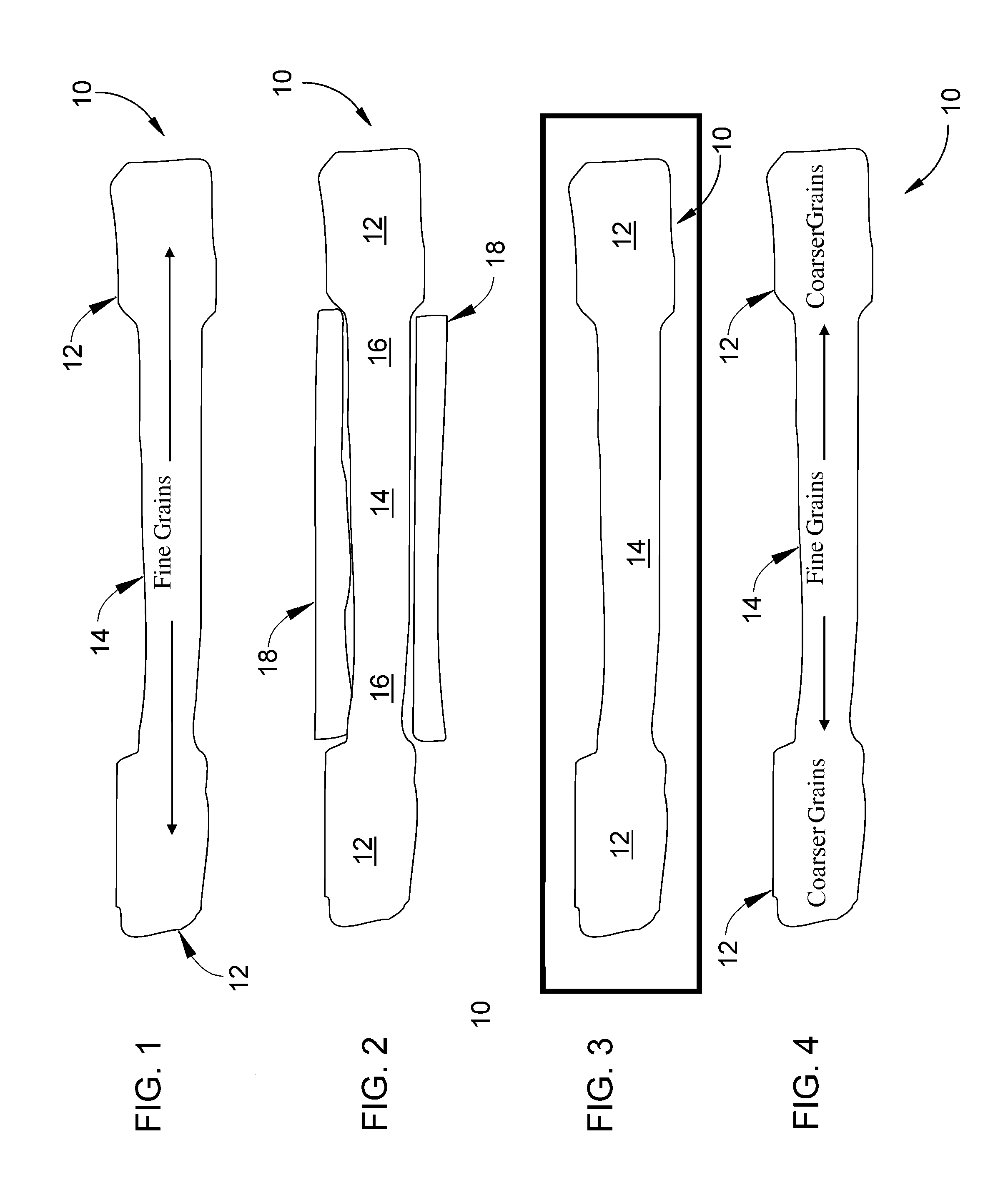Method of controlling grain size in forged precipitation-strengthened alloys and components formed thereby
a precipitation-strengthened alloy and grain size technology, applied in the field of processing metal alloys, can solve the problems of reducing the low cycle fatigue resistance of the article, non-uniform critical grain growth, and negative impact on other mechanical properties of the article, such as tensile and fatigue strength
- Summary
- Abstract
- Description
- Claims
- Application Information
AI Technical Summary
Benefits of technology
Problems solved by technology
Method used
Image
Examples
Embodiment Construction
[0016]The invention generally encompasses processing that can be performed on a wide variety of alloys, and particularly alloys capable of being hardened / strengthened with precipitates. Particularly notable examples include gamma double-prime precipitation-strengthened nickel-based superalloys, in which nickel and niobium combine in the presence of iron to form a strengthening phase of body-centered tetragonal (bct) Ni3Nb precipitates in a gamma (γ) matrix containing nickel and one or more of chromium, molybdenum and iron. Other notable examples include gamma-prime precipitation-strengthened nickel-based superalloys, in which chromium, tungsten, molybdenum, rhenium and / or cobalt are principal alloying elements that combine with nickel to form the gamma matrix and aluminum, titanium, tantalum, niobium, and / or vanadium are principal alloying elements that combine with nickel to form a desirable strengthening phase of gamma-prime precipitate, principally Ni3(Al,Ti). The precipitates of...
PUM
| Property | Measurement | Unit |
|---|---|---|
| solvus temperature | aaaaa | aaaaa |
| solvus temperature | aaaaa | aaaaa |
| solvus temperature | aaaaa | aaaaa |
Abstract
Description
Claims
Application Information
 Login to View More
Login to View More - R&D
- Intellectual Property
- Life Sciences
- Materials
- Tech Scout
- Unparalleled Data Quality
- Higher Quality Content
- 60% Fewer Hallucinations
Browse by: Latest US Patents, China's latest patents, Technical Efficacy Thesaurus, Application Domain, Technology Topic, Popular Technical Reports.
© 2025 PatSnap. All rights reserved.Legal|Privacy policy|Modern Slavery Act Transparency Statement|Sitemap|About US| Contact US: help@patsnap.com


